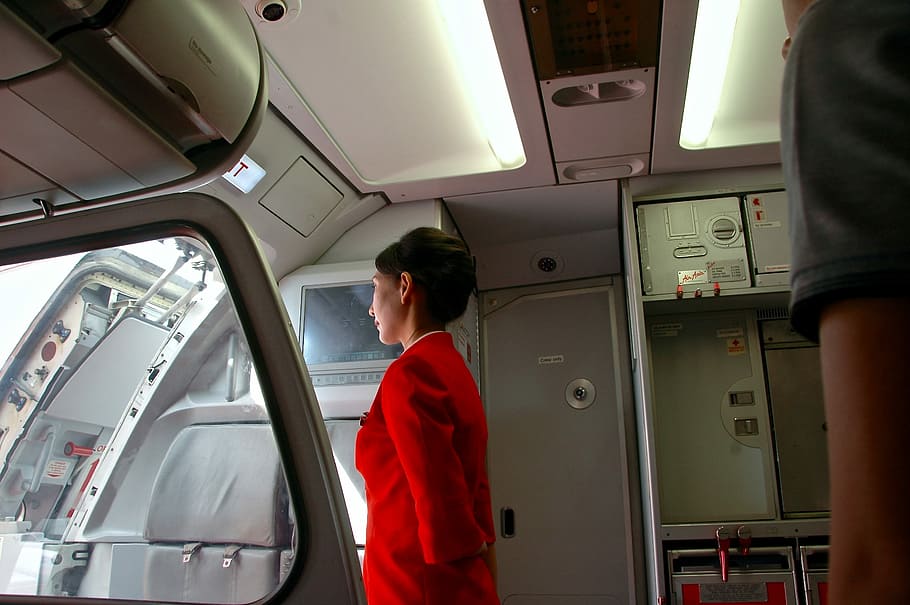Civil Aviation
Understanding Airline Code Words: Meanings and Uses for Passengers

Ever wondered what pilots and crew members are really talking about when they use strange code words? While you’re comfortably seated on a plane, the crew is busy communicating with each other using specialized language that might leave you scratching your head.
In this article, we’ll break down 20 common airline code words that you may not understand but are essential for keeping flights running smoothly.
From weather conditions to safety protocols, these terms hold important meanings that help ensure a safe and pleasant journey. Let’s dive in and uncover what these code words really mean!
“All-call”
- Meaning: A communication check among the flight crew to ensure everyone is present and accounted for.
- Use: Typically used before takeoff or during emergencies to ensure all crew members are ready.
Last minute paperwork
- Meaning: The final documentation required before a flight, including passenger lists, flight plans, and other regulatory forms.
- Use: Pilots and crew need this paperwork to ensure compliance with regulations and operational readiness.
Doors to arrival and crosscheck”
- Meaning: This phrase indicates that the aircraft doors are ready to be opened for arrival and that crew members should confirm that all doors are secure.
- Use: Flight attendants use this phrase to prepare for passenger disembarkation safely.
Ground stop
- Meaning: A temporary halt in all takeoffs or landings at an airport due to safety concerns, weather, or air traffic control issues.
- Use: Used to manage traffic flow and ensure safety during disruptions.
“Flight level”
- Meaning: An aircraft’s altitude in hundreds of feet above sea level, typically used in reference to cruising altitude.
- Use: Pilots report their altitude to air traffic control using flight levels for clarity.
“Pre-board”
- Meaning: The process of allowing certain passengers, such as those needing assistance or with young children, to board the aircraft before general boarding begins.
- Use: This ensures a smoother boarding process for passengers who may need extra time.
“Air pocket”
- Meaning: A sudden drop or turbulence caused by changes in airflow, often leading to a brief feeling of weightlessness.
- Use: Pilots may inform passengers about air pockets to prepare them for unexpected turbulence.
“Flightdeck”
- Meaning: The area at the front of the aircraft where pilots operate the controls.
- Use: Refers to the cockpit where all flight operations take place.
“Final approach”
- Meaning: The last phase of flight before landing, where the aircraft aligns with the runway.
- Use: Pilots communicate their status during this critical stage of landing.
Wheels-up time
- Meaning: The time when the aircraft’s wheels leave the ground during takeoff.
- Use: Important for flight planning and tracking the duration of a flight.
Direct flight
- Meaning: A flight that goes directly to its destination without any stops, though it may still involve layovers.
- Use: Indicates the most straightforward route for passengers.
The ramp
- Meaning: The area at the airport where aircraft are parked, loaded, or unloaded, adjacent to the terminal.
- Use: Used by ground crew and pilots to refer to the location of operations on the airport grounds.
“EFC time”
- Meaning: Expected Further Clearance time, which indicates when an aircraft will receive additional clearance from air traffic control.
- Use: Pilots use this for planning their approach and timing in busy airspace.
“Alley”
- Meaning: A narrow path or taxiway used for aircraft movement, typically between parked aircraft.
- Use: Refers to areas for maneuvering in the terminal or ramp area.
“Apron”
- Meaning: The area of an airport where aircraft are parked, loaded, or unloaded, distinct from runways and taxiways.
- Use: Ground crew operates in this area to service aircraft.
“The floor area”
- Meaning: The designated space within the aircraft where passengers are seated.
- Use: Refers to the cabin area, often used by crew to direct attention during safety demonstrations.
Red-eye
- Meaning: A flight that departs late at night and arrives the next morning, often resulting in passengers having little to no sleep.
- Use: Commonly used by travelers to save time by flying overnight.
Holding pattern
- Meaning: A predetermined flight path that aircraft follow while waiting for permission to land.
- Use: Used when air traffic control needs to manage aircraft spacing for landings.
Jump seat
- Meaning: A designated seat in the cockpit or cabin for crew members who are not actively working but are traveling on the flight.
- Use: Used by off-duty crew or regulatory personnel.
Blue room
- Meaning: The lavatory on an aircraft, particularly in reference to its blue sanitation fluid.
- Use: A colloquial term used by crew members to refer to restrooms.

